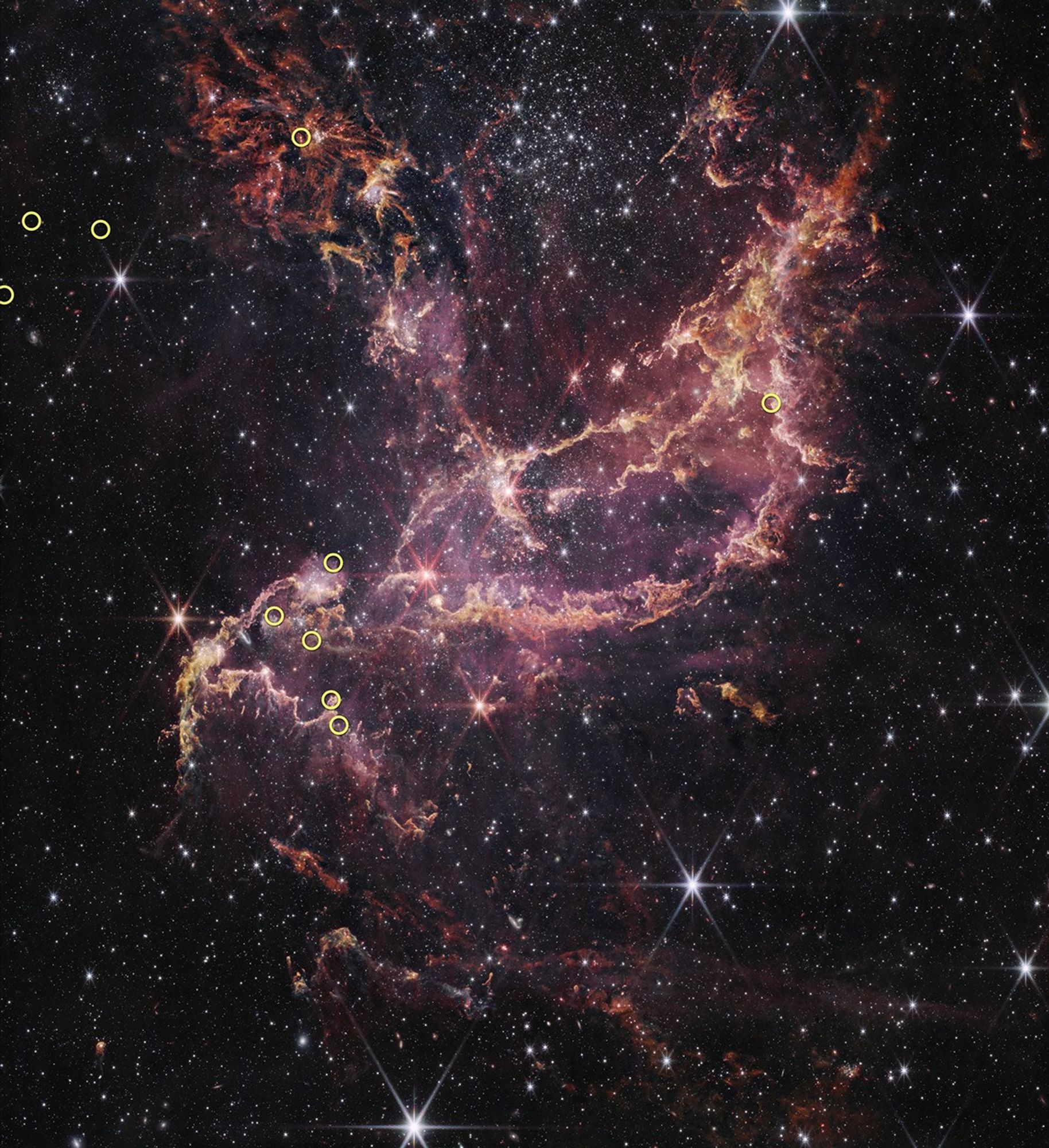Nasa
1w
409

Image Credit: Nasa
NASA’s Webb Finds Planet-Forming Disks Lived Longer in Early Universe
- Researchers used NASA’s James Webb Space Telescope to study stars in a nearby galaxy that, much like the early universe, lacks large amounts of heavy elements. They found that not only do some stars there have planet-forming disks, but that those disks are longer-lived than those seen around young stars in our Milky Way galaxy.
- Hubble observations of NGC 346 from the mid 2000s revealed many stars about 20 to 30 million years old that seemed to still have planet-forming disks around them. This went against the conventional belief that such disks would dissipate after 2 or 3 million years.
- To test this idea, scientists trained Webb on the Small Magellanic Cloud, a dwarf galaxy that is one of the Milky Way’s nearest neighbors. In particular, they examined the massive, star-forming cluster NGC 346, which also has a relative lack of heavier elements.
- The researchers explained that there could be two distinct mechanisms, or even a combination, for planet-forming disks to persist in environments scarce in heavier elements.
- This finding refutes previous theoretical predictions that when there are very few heavier elements in the gas around the disk, the star would very quickly blow away the disk. So the disk’s life would be very short, even less than a million years.
- The second possibility is that, for a Sun-like star to form when there are few heavier elements, it would have to start from a larger cloud of gas. A bigger gas cloud will produce a bigger disk.
- This has implications for how you form a planet, and the type of system architecture that you can have in these different environments. This is so exciting.”
- “With Webb, we have a really strong confirmation of what we saw with Hubble, and we must rethink how we model planet formation and early evolution in the young universe,” said study leader Guido De Marchi of the European Space Research and Technology Centre in Noordwijk, Netherlands.
- The science team’s paper appears in the Dec. 16 issue of The Astrophysical Journal.
- The James Webb Space Telescope (JWST) is the world’s premier space science observatory. The Hubble Space Telescope (HST) has been operating for over three decades and continues to make ground-breaking discoveries that shape our fundamental understanding of the universe.
- Webb is an international program led by NASA with its partners, ESA (European Space Agency) and CSA (Canadian Space Agency). Hubble is a project of international cooperation between NASA and ESA.
Read Full Article
24 Likes
For uninterrupted reading, download the app